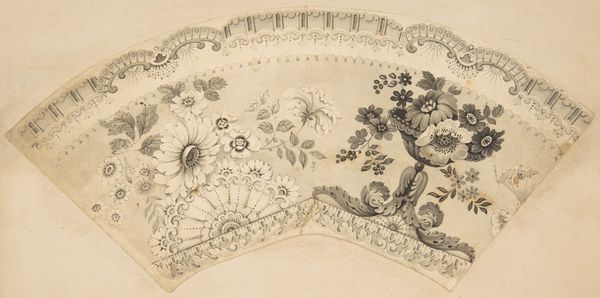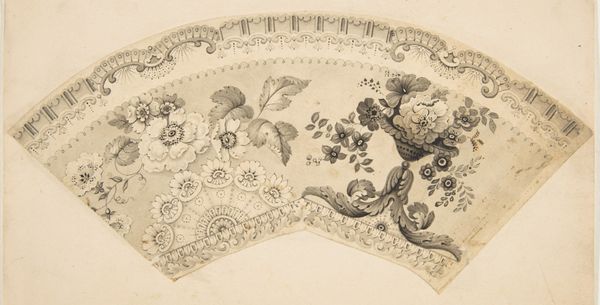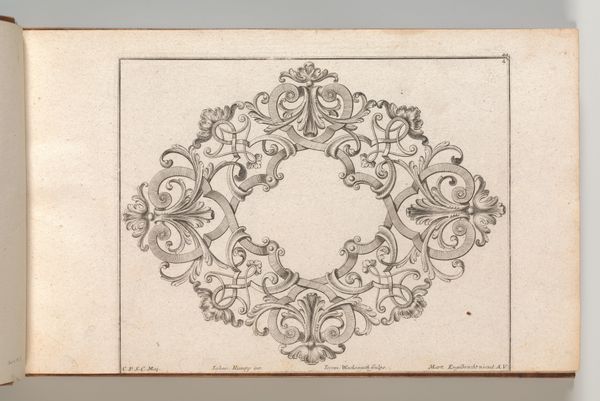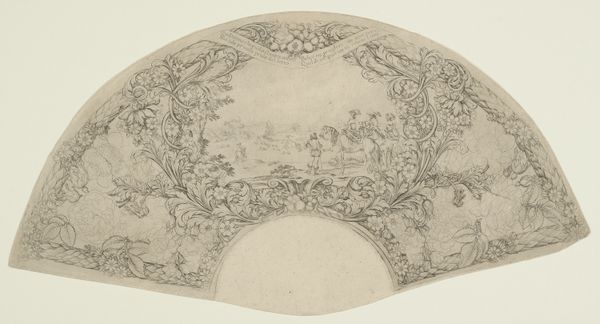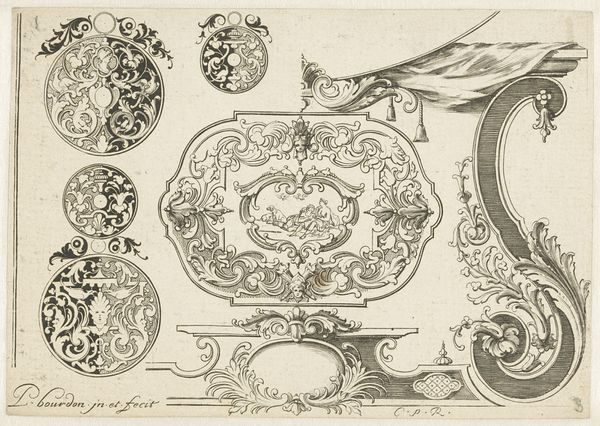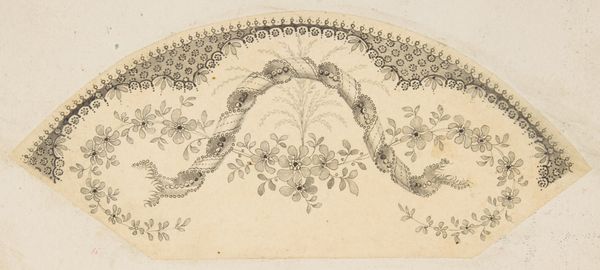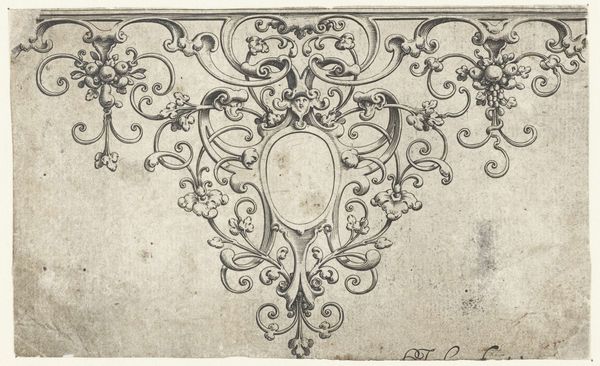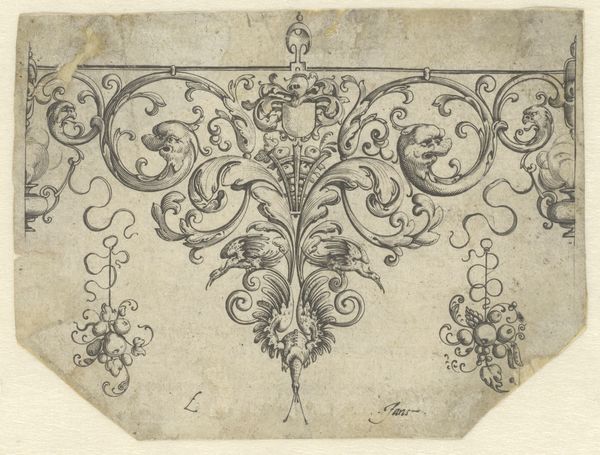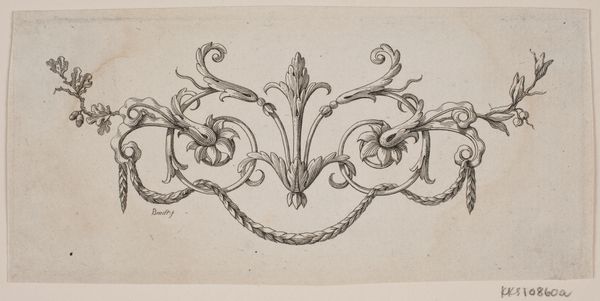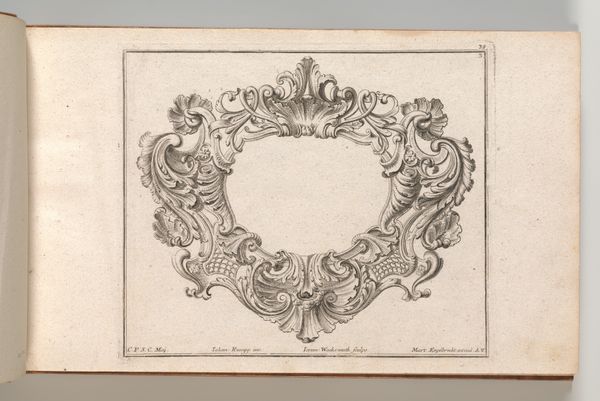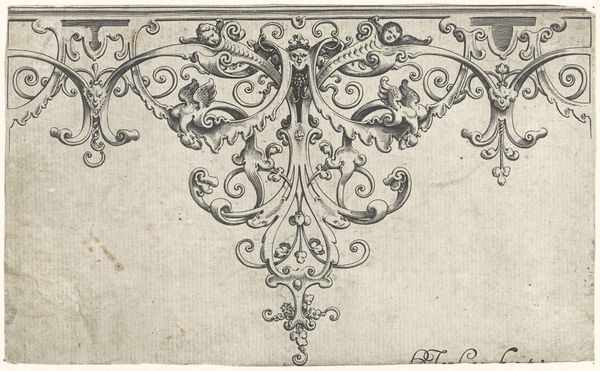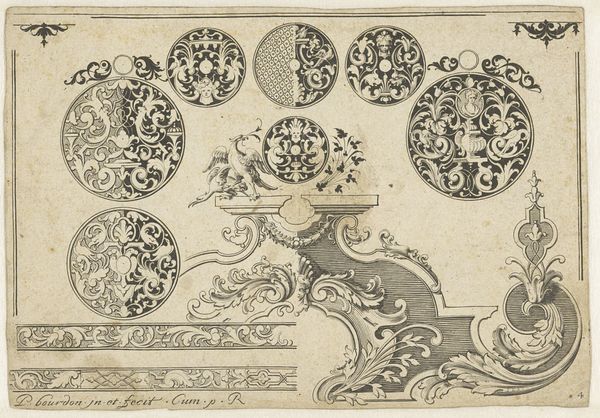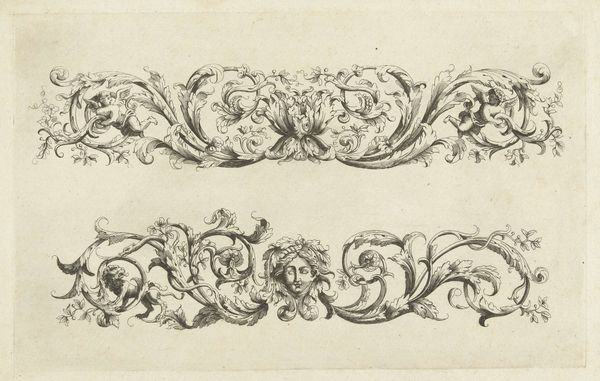
drawing, print, paper, pencil
#
pencil drawn
#
drawing
# print
#
paper
#
pencil drawing
#
romanticism
#
pencil
#
decorative-art
Dimensions: sheet: 3 1/16 x 7 11/16 in. (7.8 x 19.5 cm) mount: 6 1/2 x 8 3/16 in. (16.5 x 20.8 cm)
Copyright: Public Domain
Editor: Here we have an anonymous 19th-century "Lace Design" at the Met, rendered with pencil and print on paper. What strikes me is the division, the sort of "two sides of a coin" feeling with light and dark floral arrangements. How would you interpret this work, especially considering the time it was made? Curator: Well, let’s consider what lace represented in the 19th century. It wasn’t just decoration; it signified wealth, status, and painstaking craft, especially for women. So, a "lace design" suggests more than just aesthetics. Editor: So, it's about more than just prettiness? Curator: Exactly! Consider how this design might reflect the social expectations placed upon women of the era. Their domestic skills, their refinement, their association with delicate beauty... Were women limited because of lace? How does lace function to define or limit women? It invites questions about power structures of the time. This piece functions as a kind of decorative art, but perhaps on closer inspection it allows a critique of societal constraints. What do you think? Editor: That gives me a new perspective. So the 'two sides' could reflect these two contradictory ideas: beauty and restraint? It challenges a simple, pretty interpretation. Curator: Precisely. Art isn't made in a vacuum. Looking at historical and cultural contexts can really transform our understanding and maybe the anonymous artist also wanted us to understand something else. Editor: I learned a lot thinking about it this way! Thank you for shedding some light into "Lace Design." Curator: My pleasure! Thinking about context always opens new pathways into understanding art, doesn't it?
Comments
No comments
Be the first to comment and join the conversation on the ultimate creative platform.
